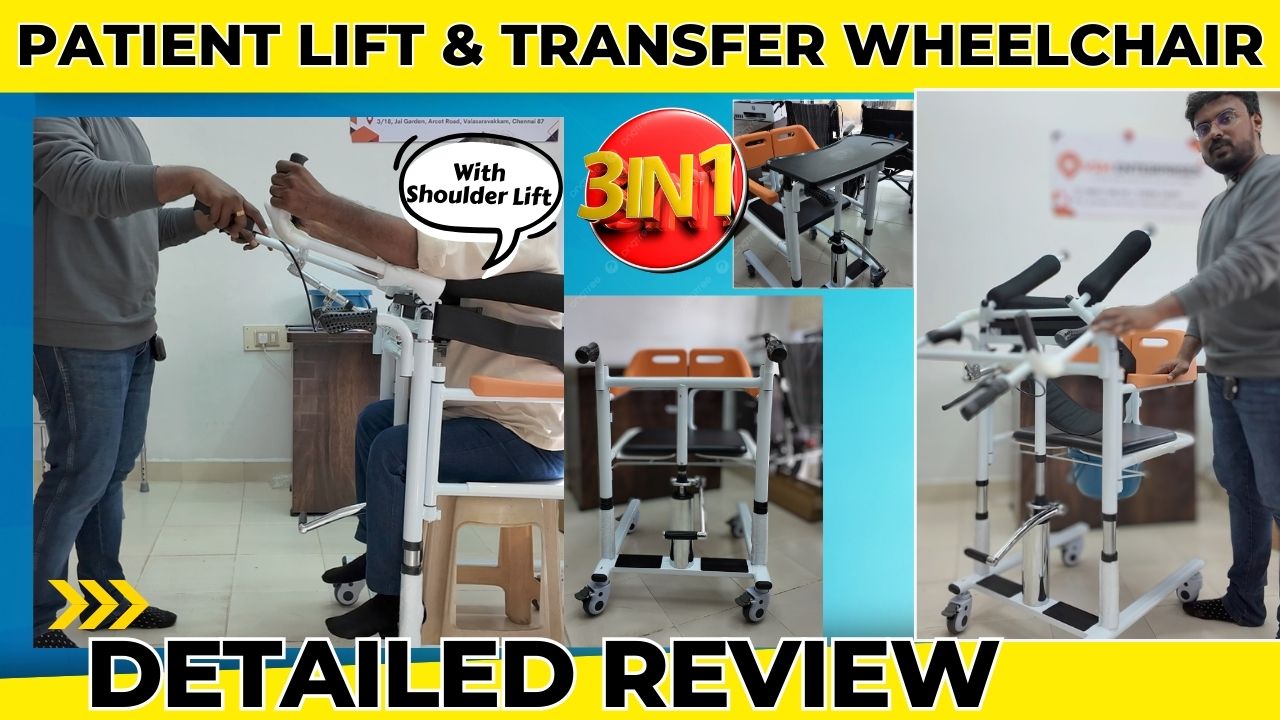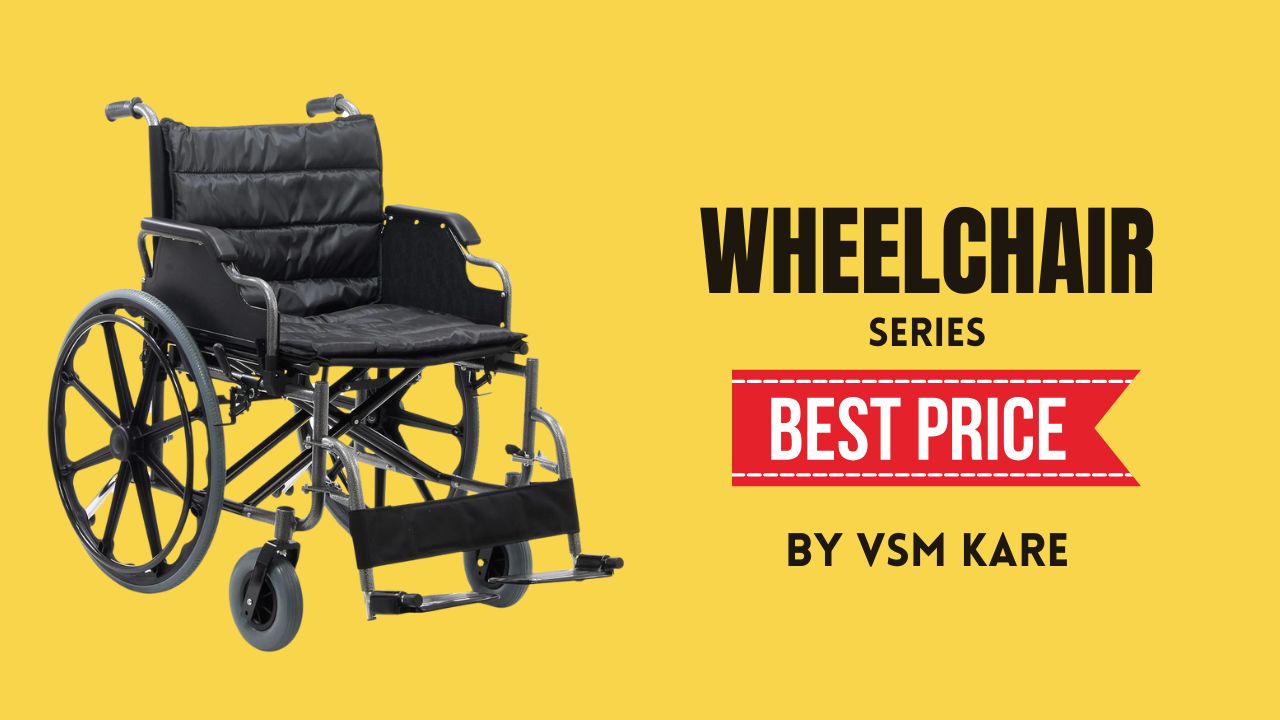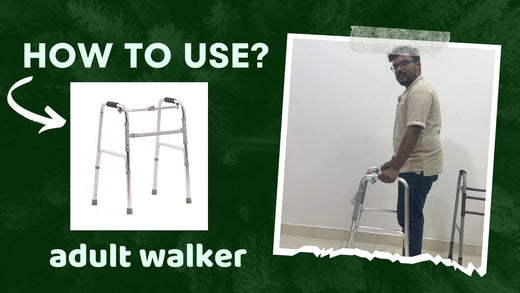Basic Walker vs. Reciprocal Walker: Understanding the Difference and How to Use a Reciprocal Walker
When it comes to mobility aids, there are various options designed to help people maintain balance, stability, and independence while walking. Two commonly used devices are the basic walker and the reciprocal walker. While both serve the same overarching purpose — to assist with walking — they have key differences that can make one more suitable than the other depending on the individual’s needs. In this blog, we’ll explore the differences between a basic walker and a reciprocal walker, and guide you on how to use a reciprocal walker effectively.
Check out this YouTube video for a quick demonstration on how to use a reciprocal walker effectively and see the benefits for yourself!
What is a Basic Walker?
A basic walker is one of the most traditional types of walking aids. It consists of a four-legged frame that provides support by offering a stable base to lean on. It usually doesn’t have wheels, and users need to lift the walker and move it forward as they walk. The basic walker is typically ideal for people who need substantial support and stability while walking, especially for those with significant mobility issues or balance problems.
Key Features of a Basic Walker:
- Four legs for support.
- No wheels (or sometimes two back wheels).
- Requires lifting to move.
- Best suited for those with severe balance or coordination problems.
What is a Reciprocal Walker?
A reciprocal walker is a more advanced type of walking aid, designed to offer enhanced mobility and ease of movement. It allows the user to walk with a more natural gait. Unlike the basic walker, the reciprocal walker has a unique design that lets each side of the walker move independently — the left and right sides of the walker swing in a "reciprocal" motion that mimics the natural walking pattern.
Reciprocal walkers are often used by people who have some strength and balance but may still need extra support. These walkers can make walking feel less cumbersome since they follow the natural rhythm of the user’s legs, making walking more fluid and less exhausting.
Key Features of a Reciprocal Walker:
- Two independent swinging sides that mimic walking motion.
- May have wheels for easier movement.
- Promotes a more natural walking gait.
- Ideal for people with moderate mobility issues or those recovering from surgery or injury.
Basic Walker vs. Reciprocal Walker: Key Differences
-
Design and Functionality:
- Basic Walker: Has a fixed frame, and the user must lift and move it forward. The walker provides a stationary point of support.
- Reciprocal Walker: Features an articulated frame with moving sides that help propel the walker forward with the user's legs. It offers a more fluid and less strenuous movement compared to a basic walker.
-
Mobility and Ease of Use:
- Basic Walker: Users need to lift and move the walker step by step, which can be tiring and may not mimic natural walking as well.
- Reciprocal Walker: The walker’s independent sides swing back and forth, making it easier to use over long distances and for people with more mobility.
-
Support and Stability:
- Basic Walker: Offers more stability due to its fixed structure, making it ideal for those who need maximum support.
- Reciprocal Walker: While providing good support, it is better suited for users who need moderate assistance and can benefit from a more natural walking motion.
-
User Needs:
- Basic Walker: Ideal for individuals who need significant assistance with balance or have difficulty lifting and moving their walker.
- Reciprocal Walker: Great for those who still need support but want to walk more fluidly, such as individuals recovering from surgery or those who have regained some strength.
How to Use a Reciprocal Walker
Using a reciprocal walker might feel a bit different from using a basic walker, but with a few simple steps, it can become second nature. Here's how to use one effectively:
-
Adjust the Walker to Your Height: Make sure the walker is set at a comfortable height. Your arms should be slightly bent when you hold the handles, ensuring you don’t strain your shoulders or wrists.
-
Stand with Proper Posture: Stand upright with your feet shoulder-width apart. Grip the handles firmly but not too tightly.
-
Move the Walker: As you begin walking, gently swing one side of the walker forward with your leg. The reciprocal walker will move in a way that mirrors your natural walking motion. The left and right sides should move independently as you step forward, helping to propel you with each step.
-
Step Forward: After the walker is positioned, step forward with the opposite leg. The reciprocal motion of the walker should make this step easier, as the walker follows your natural walking rhythm.
-
Continue Walking: Maintain a steady pace and focus on your gait. The reciprocal walker should help make your movements feel more fluid compared to a basic walker.
-
Take Breaks as Needed: While reciprocal walkers reduce the effort of walking, it’s still important to take breaks if you’re feeling fatigued. Make sure you're walking in an environment where you feel safe and supported.
Benefits of Using a Reciprocal Walker
- Improved Walking Pattern: By mimicking the natural walking motion, it helps to improve posture and reduce strain on the body.
- Reduced Fatigue: The reciprocal action of the walker reduces the effort required for each step, helping users conserve energy over long distances.
- Increased Independence: People who use reciprocal walkers often find they can walk further and more easily, increasing their independence.
Conclusion
Whether you choose a basic walker or a reciprocal walker depends on your specific mobility needs. A basic walker offers greater stability for those who need significant assistance with walking, while a reciprocal walker allows for a more fluid, natural walking experience, ideal for those who need moderate support and want to move more easily.
If you're considering transitioning to a reciprocal walker, it's a good idea to consult with a healthcare professional to ensure it's the right option for your specific condition. Once you get the hang of it, a reciprocal walker can help improve your mobility, independence, and quality of life.
Check out this YouTube video for a quick demonstration on how to use a reciprocal walker effectively and see the benefits for yourself!
I hope this breakdown helps clarify the differences and provides useful guidance for choosing and using a reciprocal walker!





 Whatsapp Us!
Whatsapp Us!